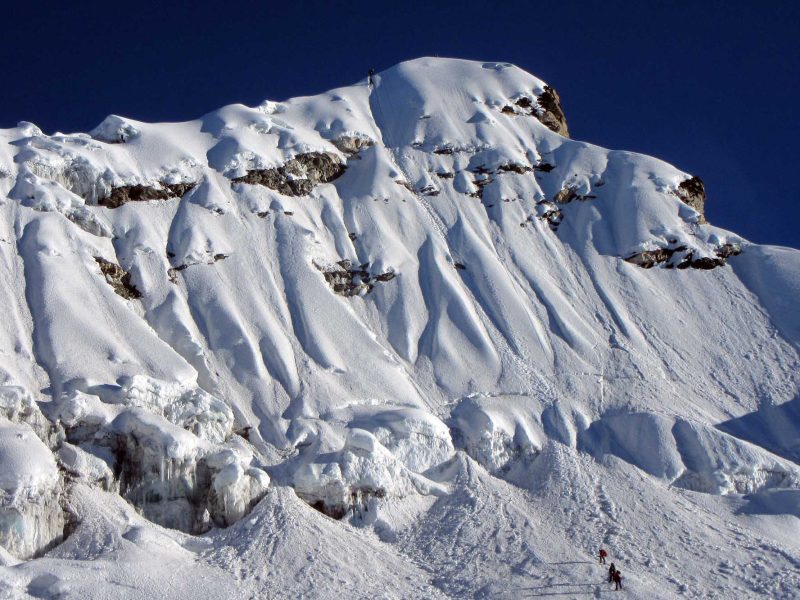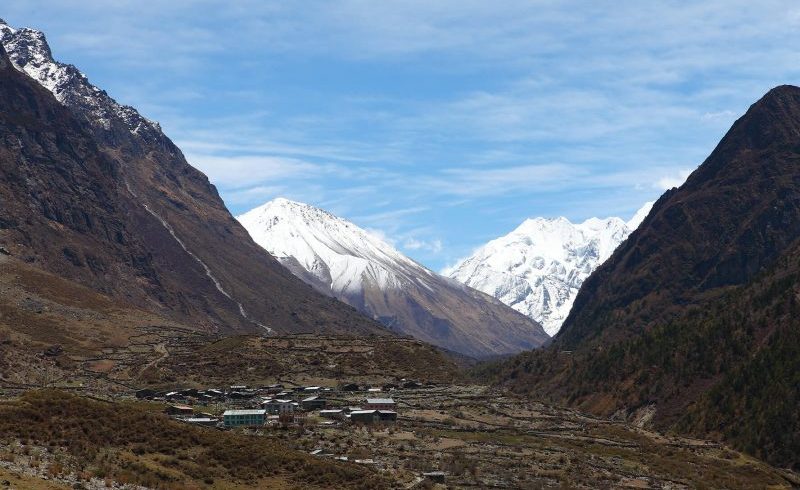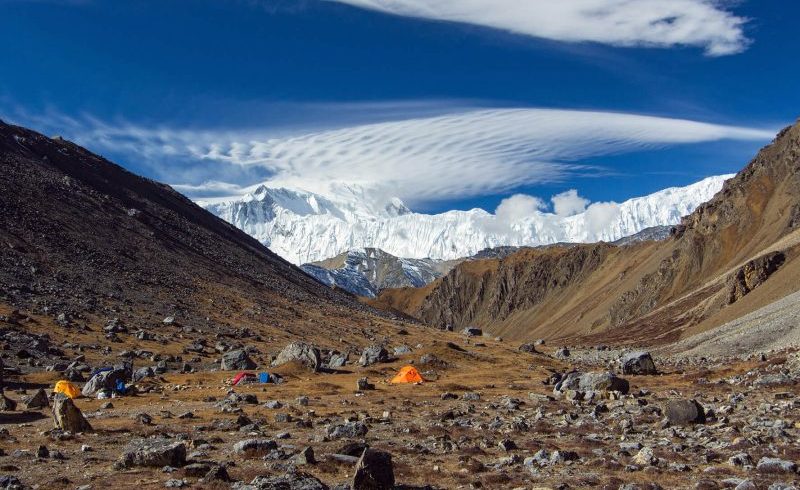Island Peak Climbing takes you to Nepal’s most renowned trekking destination the Everest region. The Everest region has always been a dream location for trekkers, climbers, and travelers. The region falls under Sagarmatha National Park, a UNESCO World Heritage Site. Home to a wide range of biodiversity and ancient culture. The Island Peak is also known as Imja Tse takes you to one of the least visited sections of the Khumbu region. The summit of the peak rises at an elevation of 6,189 meters. Regarded as an ideal peak for beginners as well as advanced climbers, it is one of the most popular trekking peaks. The peak was first summited by Tenzing Norgay, Alf Gregory, Charles Wylie, and Charles Evans in 1953. Later became an ideal destination for mountain lovers and thrill-seekers.
Starting of Trek
The Island Peak Climbing starts with a flight from Kathmandu valley towards the settlement of Lukla. Lukla is one of the gateways to the Everest region and the official starting point of your trek. From Lukla head towards Phakding traversing across the central hills of Nepal. From Phakding head towards Namche Bazaar, the Sherpa capital, and a commercial center in the Everest Region. The settlement is an old trading capital between traders of Nepal and Tibet.
After an acclimatization excursion at Namche Bazaar heads towards Tengboche. On route visit the ancient Tengboche Monastery and discover the legends and cultures of the locals. The monastery is nestled in the backdrop of the beautiful Ama Dablam. From Tengboche head towards Dingboche, trekking past birch, conifer, and rhododendron woodlands, with mesmerizing views of Mt. Everest, Lhotse, and Ama Dablam. Following the trail toward Imja Valley and the Lobuche River to the settlement of Dingboche.
Island Peak Base Camp
Next head towards Chukkung traversing across barren alpine vegetation and patches of shrubs and herbs on dry landscapes. At Chukkung you will have a day off for yet another acclimatization excursion. Head towards Chukkung Ri a vantage point of the region. From Chukkung next head towards Island Peak Base Camp. Following the trail across the Lhotse icefall and Imja glaciers. After a pre-climbing training at the base camp, the following day heads towards the summit of Island Peak.
The climb is not too technical, but you will be using crampons, ladders, and fixed ropes at some sections. From the summit witness views of Lhotse, Ama Dablam, Makalu, Baruntse, and other endless peaks of the greater Himalayan range. After spending a brief time at the summit retrace your steps back to the base camp. Next from base camp head towards the settlement of Pangboche, the oldest and highest permanent Sherpa settlement in the Khumbu region. From Pangboche retrace your steps back passing several settlements and sections of lush wilderness to the bustling Namche Bazaar. From Namche head back to Lukla and catch a flight to Kathmandu the following day.
Overview
Island Peak Climbing takes you to Nepal’s most renowned trekking destination the Everest region. The Everest region has always been a dream location for trekkers, climbers, and travelers. The region falls under Sagarmatha National Park, a UNESCO World Heritage Site. Home to a wide range of biodiversity and ancient culture. The Island Peak is also known as Imja Tse takes you to one of the least visited sections of the Khumbu region. The summit of the peak rises at an elevation of 6,189 meters. Regarded as an ideal peak for beginners as well as advanced climbers, it is one of the most popular trekking peaks. The peak was first summited by Tenzing Norgay, Alf Gregory, Charles Wylie, and Charles Evans in 1953. Later became an ideal destination for mountain lovers and thrill-seekers.
The Island Peak Climbing starts with a flight from Kathmandu valley towards the settlement of Lukla. Lukla is one of the gateways to the Everest region and the official starting point of your trek. From Lukla head towards Phakding traversing across the central hills of Nepal. From Phakding head towards Namche Bazaar, the Sherpa capital, and a commercial center in the Everest Region. The settlement is an old trading capital between traders of Nepal and Tibet.
After an acclimatization excursion at Namche Bazaar heads towards Tengboche. On route visit the ancient Tengboche Monastery and discover the legends and cultures of the locals. The monastery is nestled in the backdrop of the beautiful Ama Dablam. From Tengboche head towards Dingboche, trekking past birch, conifer, and rhododendron woodlands, with mesmerizing views of Mt. Everest, Lhotse, and Ama Dablam. Following the trail toward Imja Valley and the Lobuche River to the settlement of Dingboche.
Next head towards Chukkung traversing across barren alpine vegetation and patches of shrubs and herbs on dry landscapes. At Chukkung you will have a day off for yet another acclimatization excursion. Head towards Chukkung Ri a vantage point of the region. From Chukkung next head towards Island Peak Base Camp. Following the trail across the Lhotse icefall and Imja glaciers. After a pre-climbing training at the base camp, the following day heads towards the summit of Island Peak.
The climb is not too technical, but you will be using crampons, ladders, and fixed ropes at some sections. From the summit witness views of Lhotse, Ama Dablam, Makalu, Baruntse, and other endless peaks of the greater Himalayan range. After spending a brief time at the summit retrace your steps back to the base camp. Next from base camp head towards the settlement of Pangboche, the oldest and highest permanent Sherpa settlement in the Khumbu region. From Pangboche retrace your steps back passing several settlements and sections of lush wilderness to the bustling Namche Bazaar. From Namche head back to Lukla and catch a flight to Kathmandu the following day.
Trip Highlights
- Scale the Island Peak at an elevation of 6,189 meters.
- Travers across the deep wilderness, high alpine valleys, and rocky terrain.
- Walk beath the world’s tallest mountains.
- Observe and learn about the culture and lifestyle of the mountain people.
- Visit ancient monasteries and Gompas of the region.
- Try various cuisines and delicacies of the region.




